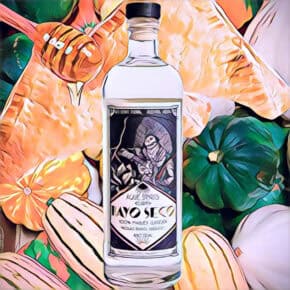When word got out that 60 Minutes was doing a segment on mezcal, a lot of us deeply entrenched in mezcal world began holding our breath. So much trepidation around how they would approach the subject, who was going to be interviewed, what would be the focus and of course would they get the “story” right.
Some might say I have always been an old person given that I have been watching the show since I was around 10 years old. And I love it, I even got my now 20 year old into it, so much so that one time when we were in Oaxaca and met a 60 minutes producer on vacation, he couldn’t have been more excited expressing his love of Scott Pelley. He was 13 at the time. For me, it is one of the few mainstream media tv news shows that does in depth story coverage and provides context and depth to its subjects. To say I was personally invested in how the program would turn out would be a vast understatement. I really didn’t want to be disappointed.
Having a show like 60 Minutes devote a segment of primetime to a mezcal story is a huge effing deal, especially given how unknown it still remains outside of Mexico. The show averages 8.3 million viewers and is a reference point for other news outlets and their coverage. And how they covered the story would set a mark or tone for how others could follow. It is no understatement to say this was an enormous exposure.
Right off the bat, correspondent Cecilia Vega set the tone, introducing the story in front of a back drop that read The Mezcaleros. The story opens in a field of agave being harvested, then cuts away to a quick shot of a calenda in front of Santo Domingo before finally settling on Vega walking in an agave field with Armando and Alvaro Hernandez, the brothers who rebooted their family palenque Mal de Amor.and are producing for Ilegal Mezcal in Santiago Matatlan. While Vega eventually interviews Ilegal CEO John Rexer and Global Brand Ambassador Gilbert Marquez, the story remains firmly focused on Armando and Alvaro Hernandez and their story.
The second half of the segment moves to Santa Catarina Minas, Oaxaca and an interview with Real Minero’s Graciela Angeles Carreño and her take on what is happening and her concerns with the future of agave. The final part moves to El Nanche, Oaxaca with an interview with Eduardo “Lalo” Pérez Cortés, a 5th-generation mezcalero and his Tio Tello who produce mezcal for Cinco Sentidos.
The full segment explored the Indigenous roots of mezcal production, the pain and reality of immigration to the US, the issues of cultivation and waste, the economic opportunities the growth of mezcal has presented, the role of international conglomerates and the future of the word mezcal. And again I will say, they put the mezcaleros and their families first in telling the story of mezcal, as it should be and yet so often doesn’t happen.
Well, after 22 minutes (!!) I let out a deep sigh of relief that they hadn’t messed anything up (perhaps a sad commentary on what is happening in the news industry.) I clearly wasn’t the only one based on the various social media posts I saw. Did they cover everything in detail? No, but as those of us deep in the world of mezcal know, even a four year university degree in the study of mezcal wouldn’t be enough time to cover, learn and understand the complexities of mezcal. We are talking generations of learned knowledge and there is no way to distill that into 22 minutes. But cover a lot of territory in a clear and cohesive manner it does. And clearly it sparked interest in people watching, if the spike in our website traffic, and the specific pages that saw a surge, is anything to go by. And that’s great.
For folks new to the website – welcome! We were pleased to see the topics and people we’ve been writing about for years get this much national exposure and we invite you to dig deeper!
If you want to learn more about what mezcal is, check out our Mezcal 101. For folks wanting to learn more about Mal de Amor and Ilegal Mezcal, be sure to check out these stories here and here respectively.
We’ve written numerous times about Graciela Angeles and Real Minero, including their agave cultivation program.
Finally, the topic of sustainability is one near and dear to our hearts and one we have covered extensively, from agave cultivation, to water, wood, waste by products and economic impacts. You can find all of those stories here.












Leave a Comment